Thanking Ninkasi, drinking questionable liquids in plastic cups and feeling great in non-places
A few weeks ago, the husband and I boarded an early train to London, embarked roughly 40 mins later and walked straight into one of the station’s pubs.
I was there to learn. He was there because I dragged him along in hopes he might want to meet after my training for a pint. Which he did.
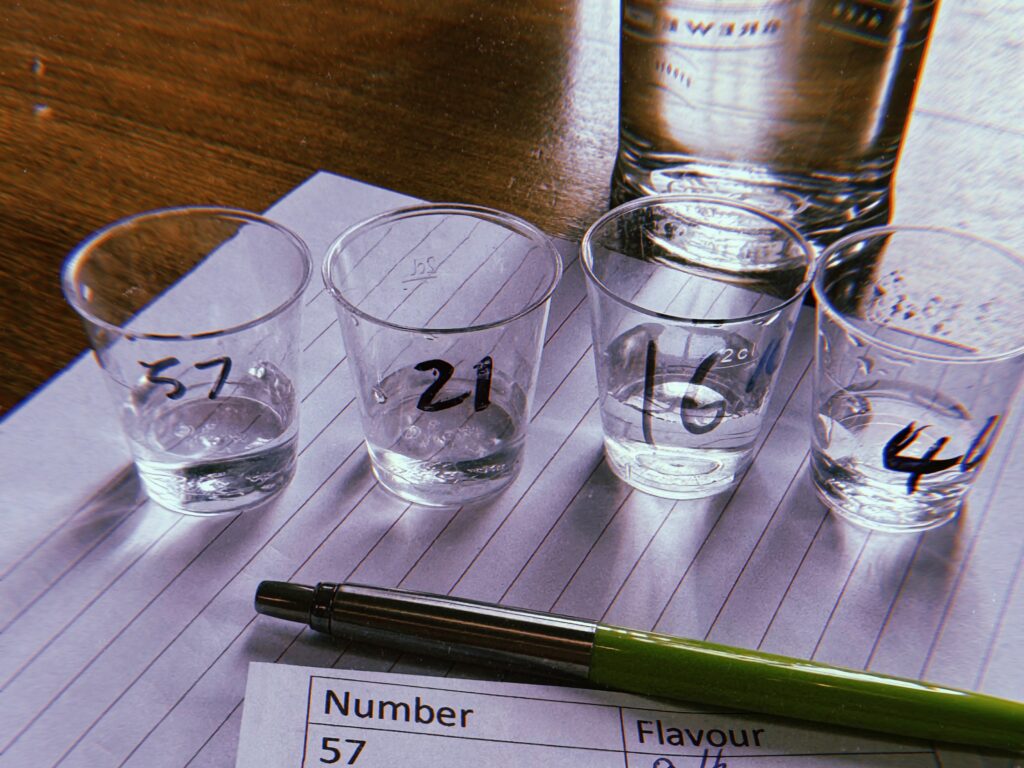
The #DesignatedResponsibleAdult even made an appearance which is always a welcomed sight.
I’ve always felt at home in non-places like airport and train stations. They offer comfort somehow. Some of my fondest memories are wandering the almost empty terminal of my local airport in Germany, late on Friday night before catching the last plane to London.
It’s like time doesn’t exist when in an airport, and yet you live in this perpetual-ness of simply existing. Train stations can have the same vibe, but on a much smaller scale. You feel like you’re in a less intimate place, people are on the move, always coming and going. Train station time is habitual. Airport time is intermittent.
Both of those non-places have pubs where some of our social inhibitions don’t seem to surface as much. Seeing a person enjoying a pint with breakfast doesn’t automatically say that the person is a drunk, right? It’s just accepted. Weird, but the airport pint is something sacred. It could be the first drink of your holiday; it could be the last. It could be an AF, it could be high octane. But regardless of the ABV, drinking in an airport pub is non-conformist-yet-ritualistic.
And train station pubs are a whole new level of non-place experience. And I’m here for it!
Typically, far more of a quick stop then a longer session, you drink one or two and move on. You may have missed your train, are waiting for a connection or have planned a Feierabendbierchen[i].
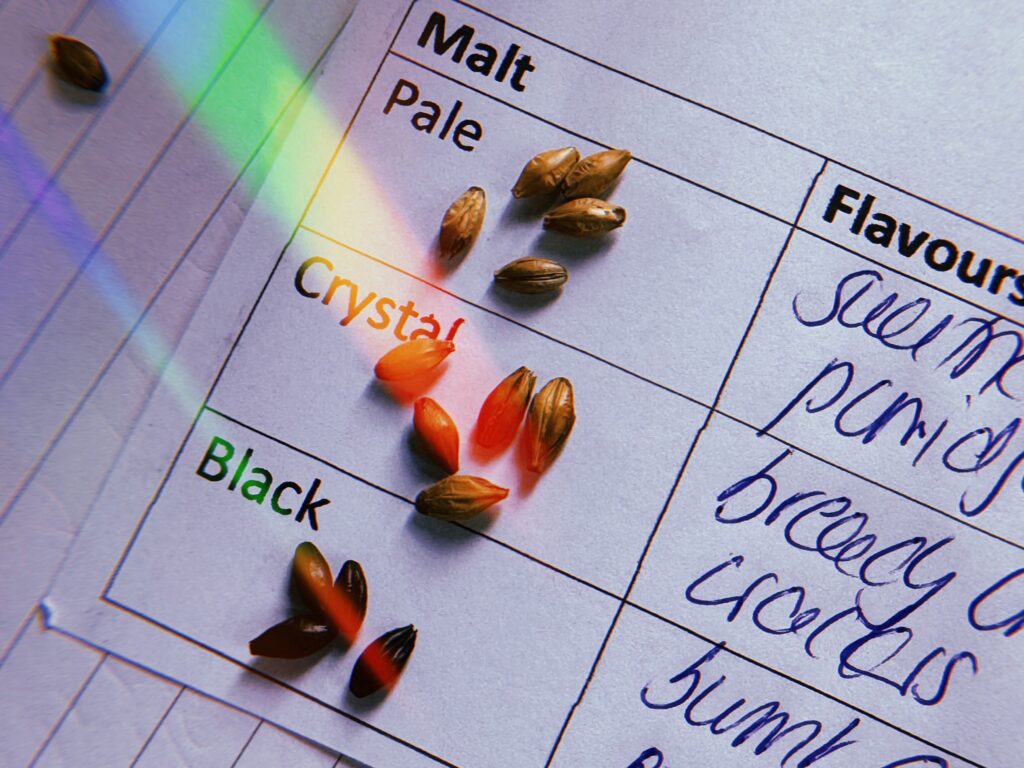
We make our way to the bar, state that we have booked a table for breakfast and look around. The interior is familiar to anyone who has been to a station pub: once you walked through the main door you entered a place akin to Queen Victoria time – leather suitcases and trunks, metal signs and paper posters inviting you to take the train to the seaside. Mind the Gap. Old luggage scales and maps. Signs pointing you in the direction of Parcels and Left Luggage, The Station Masters Room and the Ladies & Waiting Room.
It was a few minutes before 10 and the place was fairly empty. We were guided to our table and settled in. Opposite us is a group of men drinking pints of lager. I’m assuming it’s lager judging by the glassware and the foamy head of the beer. Next to us, someone is drinking tea and enjoying a cooked breakfast. Across from us a couple is eating cake.
I leave him engrossed in news on crypto currency and make my way into the First Class Lounge.
The room is set up with tables and chairs, and I’m told on which table to sit after I checked in with the organisers. The atmosphere is electric, or should that be eclectic, maybe both actually. All of us are here to learn more about cask ale evaluation, common characteristics, style identification, off–flavours and faults.
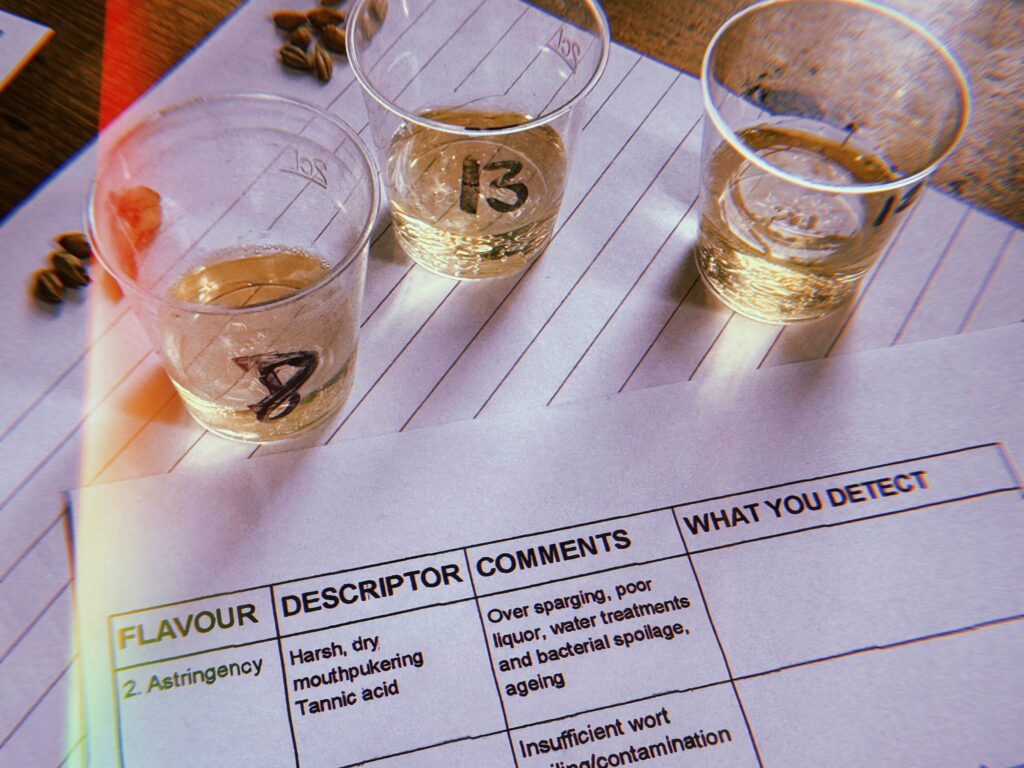
Ah, cask ale *swoon*
… when it’s brewed, kept and served correctly, there is nothing better that water, malt, hops and yeast can become, but get it wrong and it’s sad. Really sad.
A while ago I had the unpleasant experience of a sour pint… It wasn’t meant to be a sour beer. It was brewed to be a Best Bitter, but wild yeasts or bacteria, improper storage and/or handling had other ideas. The experience was bad enough to put me off that beer and the pub for a while.
Thank Ninkasi[ii], faulty beer encounters like that are few and far between. Badly brewed or kept beers are common, but dire faults are rare indeed.
Regardless or recurrence, ever the eager student, I needed to know more. Cue eye rolling from the husband. Having been trained in cider off flavours and faults, I was keen to learn more about faults and flaws in beer. As unpleasant, disagreeable and perhaps vile as some flavours can be, without consciously experiencing them every now and then, you won’t be able to spot them next time they surprise you in the glass. And I’m a firm believer in good beer.
But bear in mind, most of the spiked samples typically uses in training sessions will showcase a worst-case flavour scenario.
Severely oxidised beer will indeed taste like stale wet cardboard but finding that in your beer should be relatively isolated. You’re more likely to detect a sherry like character as an indicator that your beer is affected by oxygen.
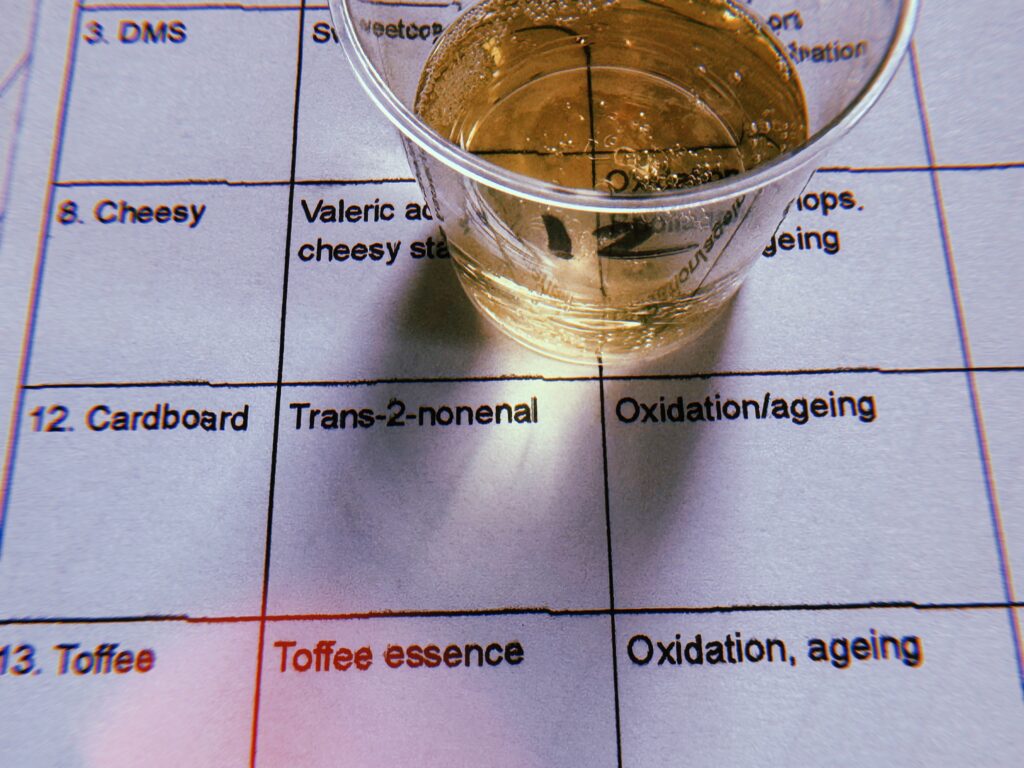
Back in the First Class Lounge, I spend the next few hours tasting my way through various small cups of water samples, smelled hops, chewed on malt and drank and sniffed spiked beer samples. From the somewhat pleasant butterscotch (cue Diacetyl due to bacterial spoilage), random cooked sweetcorn character (Dimethyl Sulfide aka DMS due to contamination or insufficient wort boiling), to the now almost iconic wet carboard (oxidation and aging) I gave myself completely to the experience. When I encounter a new smell, or make a connection to a smell, I try and experience it as much as possible in hopes I can remember it in the future. During guided tasting I often go back to the individual ingredients and try to experience them in isolation.
If you ever get a chance to do some off-flavour training, I highly recommend it and encourage you to join. First of all, it’s fun! And secondly, you’ll understand your own preferences more. Sniff and chew your way through everything that intrigues you, you may be surprised by your own inclinations.
I don’t mind a bit of diacetyl if its’s style-appropriate, but excessively it’s certainly a fault.
You can probably guess by now, that I celebrate tutored tastings hard! I actively seek aromas and flavours in my drinks and I think you should too. And get others involved! The long suffering husband is a great companion for such educational activities!
Anyway, es war mir ein Fest!
Take care and try something new today!
xxx
[i] A cheeky post work beer – it’s a German thing, trust me.
[ii] Ninkasi, the Mesopotamian Goddess of Beer and Brewing fame, Early Dynastic Period, c. 2900 – c. 2350 BC
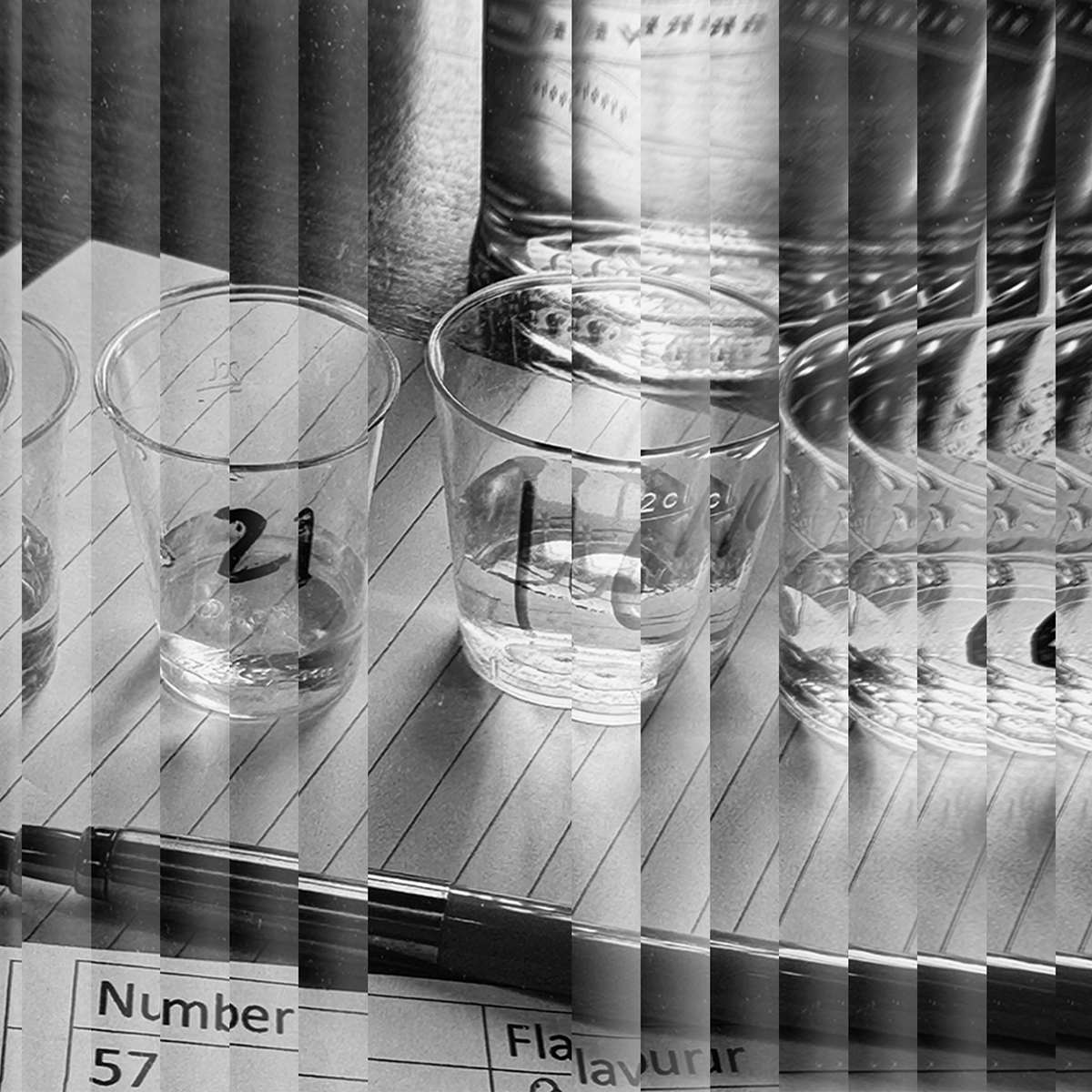
Leave a Reply